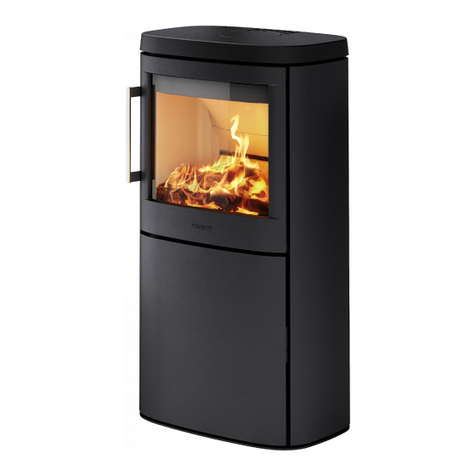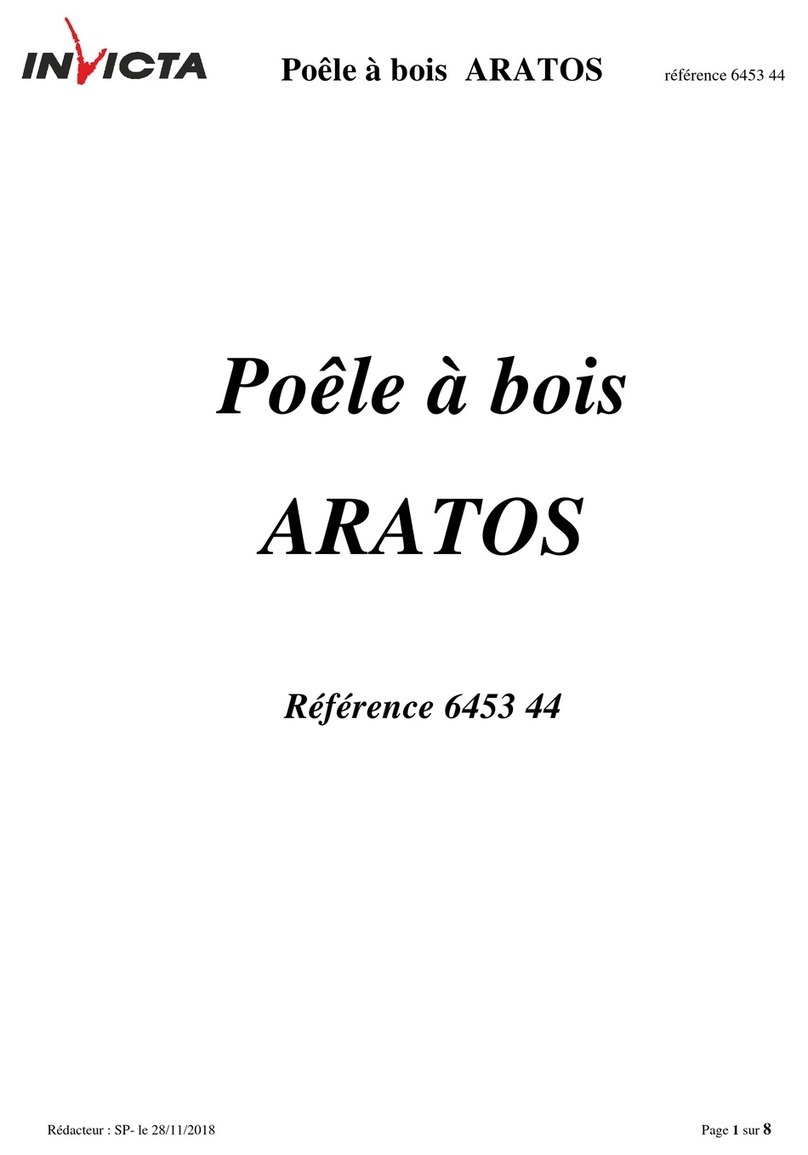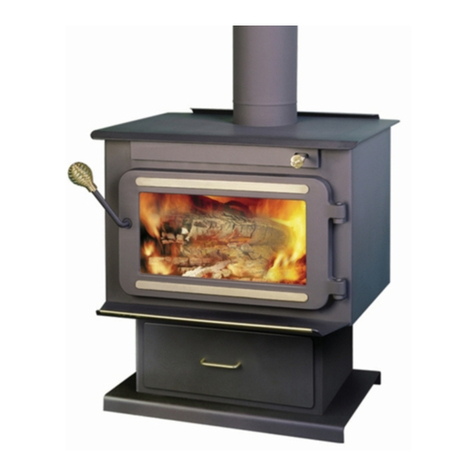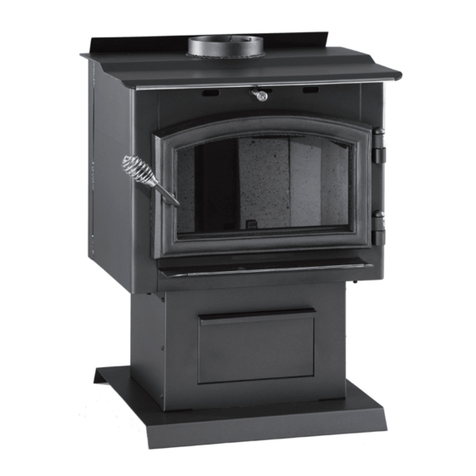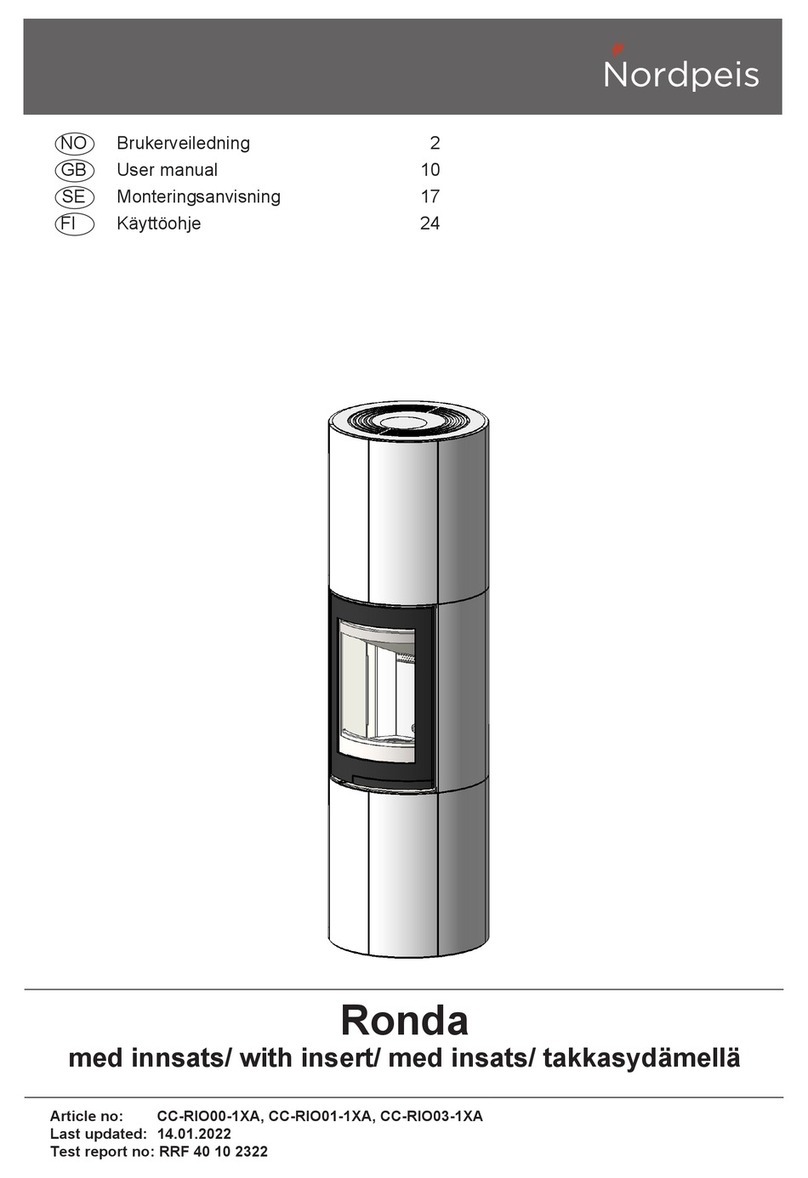SOLZAIMA K3 User manual

Instruction Manual
English
Free Standing Fires
K3 | K4 | M1 | M2 | M12-F
M20 | M30
Mod. 167 –E
Please read this Instruction Manual carefully and keep it for future
reference.
All Solzaima products come with a 2-year warranty.
APPROVED PRODUCT

Thank you for purchasing a SOLZAIMA unit.
Please read this manual carefully and keep it for future reference.
* All our products fulfil the requirements of the European Regulation (Reg
UE 305/2011) and have been certified with the CE conformity trademark;
* SOLZAIMA disclaims responsibility for damages to the unit if it is installed
by non-qualified personnel;
* SOLZAIMA disclaims responsibility for damages to the stove if the rules
for installation and use described in this manual are not followed;
* All local regulations, including those referring to national and European
standards, should be complied with when installing the stove;
* Our Free Standing Fires have been tested according to standards EN
13240:2002 + EN 13240:2002/A2:2005 + EN 13240:2002/AC:2006 + EN
13240:2002/A2:2005/AC:2006 and EN 12815:2002 + EN
12815:2002/A1:2005 + EN 12815:2002/AC: 2006 + EN
12815:2002/A1:2005/AC:2006;
* Technical support is normally provided by SOLZAIMA, except in
exceptional cases to be determined by the installer or support technician;
* Whenever you need assistance, you should contact your unit’s supplier
or installer. You should provide its serial number, which is on the
identification plate located on the left side of the ash drawer, as well as on
the label on the back cover of this manual.
Contents:
Solzaima ........................................................................................ 3
Technical Specifications................................................................. 3
Your stove...................................................................................... 7
Components................................................................................... 8
Installation...................................................................................... 8
Instructions for Use........................................................................13
Troubleshooting.............................................................................21
End of Life.....................................................................................22
Sustainability.................................................................................22
Glossary........................................................................................23
Warranty........................................................................................25
1
2

Solzaima
Solzaima's vision has always been to provide a clean, renewable and more
cost-effective energy. This is why we've been dedicating ourselves for
more than 35 years to the manufacturing of biomass heating equipment
and solutions.
As a result of the persistence and unconditional support from our partner
network, Solzaima is today a leading player in the production of biomass
heating solutions, best illustrated by our backboiler fires for central heating.
We provide annually approximately 20000 homes with biomass heating
solutions. This market has been growing at an annual rate of 20% - a sign
that consumers are becoming increasingly aware of ecological and more
cost-effective heating solutions.
Solzaima is the only manufacturer in Portugal with ISO9001 quality
certification and ISO14001 environmental certification –we believe we are
a role model in this respect.
Technical Specifications
Free Standing Fires are designed to heat their surroundings. The M12-F
model has the added advantage of a built-in oven for purposes other than
just heating. These units are easy to install and do not require any finishing
of any kind, integrating perfectly into the room around them.
* Technical specifications across the range:
* CE certified
* Energy Class
* Fuel: Dry firewood
* Voltage: 230 V (Except M20 and M30)
* Frequency: 50 Hz (Except M20 and M30)
* Power: 2x9 W (Except M20 and M30)
* Type of Equipment: intermittent use
Class 1
3
4

Table 1 –Technical Specifications for each Unit
W –Width; H –Height
1
Power output is calculated by taking into account a variation of 30% in relation to the rated
output.
2
Consumption of firewood, taking into account the range of power outputs.
K 3
K 4
M 1
M 2
M 12-F
Dimensions
W
H
W
H
W
H
W
H
W
H
Front (inches/mm)
31.5/
800
35/
890
31.5
/800
35/
890
21.4
/545
35.2
/895
21.4/
545
35.2
/895
23.5
597
40.9/
1040
Total Depth ( inches/mm)
22.9/582
22.9/582
16.5/420
16.5/420
20/508
Flue Ø (inches/mm)
Ø 5.9/150 int.
Ø 5.9/150
int.
Ø 5.9/150
int.
Ø 5.9/150 int.
Ø 5.9/150
int.
Rated output (kW)
10,4
10,4
10,4
10,4
9,2
Efficiency (%)
75
75
75
75
77
CO Emissions (13%O2)
(%)
0,77
0,77
0,77
0,77
0,69
CO2 Emissions (%)
10,3
10,3
10,3
10,3
11,1
Average combustion
temperature (ºF/ºC)
572/300
572/300
572/300
572/300
564.8/296
Combustion flow (g/s)
9
9
9
9
7
Power output1(kW)
7,3 –13,5
7,3 –13,5
7,3 –13,5
7,3 –13,5
6,4 –12
Firewood consumption2
(pounds/kg / h)
4.8/2.2 –
9/4.1
4.8/2.2 –
9/4.1
4.8/2.2 –
9/4.1
4.8/2.2 –
9/4.1
4.2/1.9 –
7.7/3.5
Weight (pounds/kg)
251.3/114
233.6/106
178.5/81
209.4/95
321.8/146
Maximum heated volume
(m3)
307
307
307
307
273
Energy efficiency rating
1
1
1
1
1
Length firewood (
inches/mm)
9.8/250
9.8/250
9.8/250
9.8/250
300
M 20
M 30
Dimensions
W
H
W
H
Front (inches/mm)
19.4/
494
24.6
/626
20.9
/533
36.4
/925
Total Depth (inches/mm)
13.9/355
15/383
Flue Ø (inches/mm)
Ø 4.9/125 int.
Ø 4.9/125
int.
Rated output (kW)
9,2
9,2
Efficiency (%)
69
69
CO Emissions (13%O2)
(%)
0,64
0,64
CO2 Emissions (%)
10,6
10,6
Average combustion
temperature (ºF/ºC)
737.2/392
737.2/392
Combustion flow (g/s)
8
8
Power output1(kW)
6,4 –12
6,4 –12
Firewood consumption2
(pounds/kg / h)
4.6/2.1 –
8.6/3.9
4.6/2.1 –
8.6/3.9
Weight (pounds/kg )
101.4/46
112.4/51
Maximum heated volume
(m3)
273
273
Energy efficiency rating
1
1
Length firewood (
inches/mm)
9.8/250
9.8/250
5
6

Your Unit
Fig. 1 –Free Standing Fires M20 and M12-F.
Components
* The combustion chamber and casing of all our Free Standing Fires are
made of top-quality carbon steel plate with a thickness of 0.1 inches (5mm)
and 0.019 inches (1.5mm), respectively.
3
The M12-F model includes a
stainless steel oven with a gas exhaust duct connected to the flue;
* The front panel and ash grate are made of grey cast iron.
* Heat-resistant ceramic glass. Can withstand temperatures of up to
1382°F (750°C) in continuous use;
* Heat-resistant paint for temperature peaks up 1652°F (900°C) and
operating temperatures in the order 1112°F (600°C);
Installation
Attention: all regulations and standards must be complied with when
installing this unit.
1. Combustion air and gas circulation
*This type of stove should be installed in well-ventilated areas. Any air
intake grilles should be placed in locations that are not liable to become
blocked;
3
The combustion chamber in models M20 and M30 has a thickness of 3mm.
M 20 (without forced ventilation)
Hot air outlet
Combustion air intake
regulator
Door handle
Smoke outlet
M 12-F (with forced ventilation)
Combustion air intake
regulator
Hot air outlet
Smoke outlet
Flue damper
Oven
Ventilators
7
8

* The combustion air enters the fire through the combustion air intake
damper on the front of the unit. This flow should be kept clear at all times;
* Additional air inlets may be needed if the stove is used in simultaneous
with other devices that require an air supply. The installer should evaluate
the situation according to the overall air flow requirements;
* Under normal operating conditions, the combustion gas flow should
create a draught of 12 Pa one metre above the throat of the flue. For
proper installation, at least 78.7 inches (2 metres) of metal flue tube with
the same diameter as the unit's smoke outlet should be fitted vertically
above the unit. After this section, sections of tubing with a maximum angle
of 45° may be used;
Figs. 2 and 3 illustrate correct and incorrect angles for installing a bend, if
required.
45º45º45º
45º45º
Fig. 2 –Correct angle for bends Fig.3 –Incorrect angle for bends
* A single-walled tube installed on the outside of a building results in the
condensation of water vapour in the combustion gases. Instead, use of a
double-walled, insulated tube is recommended;
* The flue outlet should allow for good air circulation and be placed at least
23.6 inches (60cm) above the top of any obstacle located within a distance
of 9.8 feet (3m);
* The ash grate should be installed with the narrow slots facing upwards;
* The same flue should not be used for more than one unit or open
fireplace. With shared chimneys, each flue should reach its outlet
independently and these should be at the same level to ensure that the air
circulation expels the gases;
* Brick chimneys should not be too wide, as the smoke will cool as it
disperses, reducing the draft. In case of draft problems, a revolving
chimney cowl can be installed;
2. Installation location requirements
* The unit should stand on a masonry hearth made of refractory bricks or
another type of non-combustible material;
* Combustible materials should not be installed close to the walls of the
stove;
* The floor on which the unit will stand must be able to support a
permanent load of 2.2 pounds (1kg)/cm ². If the load capacity of the floor is
insufficient, a solid plate can be used to distribute the load over an area
larger than the unit’s base;
* The building’s air intake grilles should not be obstructed;
9
10

* Ensure that the structure built into the wall is of an appropriate size to
house the unit;
* Materials/objects placed near the stove should be able to withstand the
heat radiated from the glass and walls, so should not be combustible;
* Refractory cement or other refractory material should be applied on the
chimney walls.
* The use of wood finishings may increase the risk of fire. Therefore, we
recommend the use of adequate insulation or that wood not be used at all.
3. Forced Ventilation and Circuit Diagram
* Units that are equipped with forced ventilation include two 9 W ventilators
that generate an air flow of 8 cubic mile (84m3) /h each, connected in
parallel through a thermostat according to the circuit diagram below.
Fig. 4 –Circuit diagram
Attention: all three wires in the power feed cable –earth, neutral and live –should be
connected. We take no responsibility for any damage resulting from non-compliance with this
warning.
* The electrical components should always be connected to the power
supply;
TERMOSTATO
TERRA
NEUTRO
FASE
VENTILADOR VENTILADOR
JUNÇÃO CERÂMICA
JUNÇÃO CERÂMICA
CERRA-CABOS
TERRA TERRA
11
12

* The cable used for the electrical connection should be silicon-coated and
heat-resistant to 356°F (180°C). If the power feed cable is damaged, it
should only be replaced by a qualified technician;
* You should take care to not lay the cable where it may be crushed;
* The electrical installation should incorporate means to switch the unit off,
with a minimum separation of 0.118 inches (3mm) between the contacts,
pursuant to the applicable legislation in force.
4
Instructions for Use
Attention: all regulations and standards must be complied with when
installing this stove.
1. Fuel
* Only firewood should be used in this type of unit. It may not be used as
an incinerator, nor should other materials such as coal, painted wood,
varnishes, thinners, liquid fuels, glues or plastics be used. Also avoid
burning common combustible materials such as cardboard and straw;
* Exotic firewood should also not be used as fuel;
* The firewood should have low water content (less than 20%). We advise
that it should be placed in covered storage for around 2 years after felling,
in order to ensure efficient combustion and avoid creosote build-up in the
smoke duct, combustion chamber and on the glass; see Table 2, which
lists some of the types of wood that can be used in these units;
4
We recommend the use of a 30 mA differential switch and a 0.5 A circuit breaker for the unit’s
electrical installation.
Table 2 –List of types of firewood that may be used in SOLZAIMA fires, their
geographical distribution and calorific value/reactions.
Common
Name
Scientific
name
Distribution
(total: 18
districts)
Characteristics
Smoke
Heat
Lighting
Combustion
Speed
Hardness
Pine
Pinus
Europe, except
Finland; Northern
Sweden and
Norway.
Little
High
Easy
Fast
Soft
Cork Oak
(+)
Quercus
suber
Southern Europe
Little
Very
High
Easy
Regular
Hard
Eucalyptus
Eucalyptu
s
Mediterranean
Region
Lot
Regu
lar
Difficult
Slow
Hard
Holm Oak
(+)
Quercus
ilex
Southern Europe
Little
Very
High
Difficult
Slow
Hard
Olive tree
Olea
Mediterranean
Region
Little
Very
High
Difficult
Slow
Hard
Oak
Quercus
Across Europe
Little
High
Difficult
Slow
Hard
Ash
Fraxinus
Across Europe
Regula
r
High
Difficult
Slow
Hard
Birch
Betula
Across Europe
Little
Very
High
Easy
Fast
Soft
Beech
Fagus
Europe, except
Iberian Peninsula
and Northern
Europe, including
United Kingdom.
Little
High
Difficult
Slow
Hard
Elm
Ulmus
Across Europe
Regula
r
High
Difficult
Slow
Hard
Maple
Acer
Across Europe
Little
Regu
lar
Regular
Slow
Soft
Poplar
Populus
Across Europe
Little
High
Easy
Fast
Soft
Chestnut
Castanea
Across Europe
Regula
r
High
Difficult
Slow
Hard
(+): greatest availability
13
14

1.1. Power
The power of your unit indicates its heating capacity, i.e. the energy your
unit transfers from the firewood to your home (usually measured in kW)
and is directly related to the amount of firewood that you place in it.
The rated output is the measure of a standard load of firewood when
tested in laboratories during a certain amount of time.
The power output is a manufacturer's recommendation from tests to the
equipment with firewood loads within a reasonable operation range. This
power output range will present different firewood consumptions per hour.
1.2. Energy Efficiency and Performance Ratings
Implementing solutions that seek to achieve greater energy efficiency
allows for substantial reductions in energy needs, and thus reduces our
current dependence on fossil fuels and other non-renewable sources of
energy.
Energy efficiency enables you to make large savings from both an
economic and an environmental point of view.
As a result of Solzaima's commitment towards the equipment's efficiency,
most of our products are classified as efficiency class 1, i.e., with an
efficiency rate equal to or greater than 70%.
A 70% efficiency rate means that 70% of the energy contained in the
firewood is used to warm your home or, in other words, you are able to
produce the same amount of energy with much less firewood.
*in accordance with EC classification standards for insert fires.
A Solzaima 5kW unit with an efficiency rate of 75%, i.e. efficiency class 1,
will consume approximately 3.5 pounds (1.6kg) of firewood per hour to
warm a 389 sq ft room (35m2).
Typically, a traditional fireplace has an efficiency rate of approximately
10%, which means it will consume about 26.5 pounds (12kg) of firewood to
produce the same 5kw necessary to warm the same 389 sq ft room
(35m2).
EFFICIENCY RATING*
EFFICIENCY RATE*
(fire door closed)
1
2
3
4
1
2
3
4
70 %
60% < 70 %
50% < 60 %
30% < 50 %
15
16

FIREWOOD CONSUMED IN ONE HOUR TO WARM
APPROXIMATELY 389 SQ FT (35 M2) WITH A 5kw STOVE
A traditional fireplace with an
efficiency rate of 10%
consumes 26.5 pounds (12kg)
of firewood
A fireplace equipped with a
simple fire (class 4) and
providing an efficiency rate of
30% consumes 8.8 pounds
(4kg) of firewood
A fire with an efficiency rate of
50% (class 3) consumes 5.3
pounds (2.4kg) of firewood
A Solzaima fire with an
efficiency rate of 75% (class 1)
consumes only 3.5 pounds
(1.6kg) of firewood
2. First Use
* Ask the installer to light the unit to ensure that all is functioning correctly;
* The stove’s paint is cured by the heat when it is first used, which may
give rise to additional smoke. If this happens, you should ventilate the
room by opening external windows and doors.
3. Normal Use
* Lighting:
a) Open the flue damper completely –lever on the top right-hand
side of the unit (where applicable);
b) Place some pine cones (preferably) on the ash grate;
c) Place some kindling wood on top, piled horizontally;
d) Open the combustion air intake regulator;
e) The lighting period is over when the body of the unit has
reached a constant temperature. You should then regulate the combustion
air intake;
* You should check that there is sufficient ventilation in the room where the
unit is installed, otherwise it will not work properly. For this reason, you
should check if there are any other heating devices which consume air
during operation (e.g. gas-fired equipment, braziers, etc). We recommend
against using these devices all at once;
* The air for combustion is drawn from the surrounding room, consuming
oxygen. You should check that ventilation grilles and other devices for
allowing air to enter from outside remain unobstructed;
* You must open the flue damper (where applicable) before reloading the
stove with firewood. First, open the flue damper completely, then wait a
little while to allow a good draught, and only then open the door slowly to
prevent drawing smoke out into the room;
17
18

* You should only open the door during reloading. Normal conditions of
use require the door to remain closed;
* Reload before the previous load has burnt completely, in order to make it
easier for the combustion to continue;
* Use of the unit is not recommended when weather conditions are so bad
that the draught is seriously affected (particularly when there are very
strong winds).
4. Safety
* The ventilators should always be connected to the power supply (where
applicable);
* You should take care to not lay the cable where it may be crushed;
* The exposed metal parts reach high temperatures - 212°F (100°C) on the
door and 140°F (60°C) on the frame. The door handle does not reach
temperatures above 113°F (45°C). Do not touch the hotter areas;
* You should use a glove or other protection if you have to touch the unit
when it is in operation;
* In case of fire in the flue, immediately close the door, flue damper
(where applicable) and air intake;
* If there is a power cut, resulting in the ventilators cutting out when the
unit is in operation, close the combustion air intake and do not load the unit
with any more firewood. Keep the door closed;
* We recommend you only use spare parts supplied by the manufacturer –
SOLZAIMA.
5. Cleaning and Maintenance
* You should remove ash from the drawer on a regular basis (after the unit
is switched off), so that the combustion air can enter through the ash grate
unobstructed;
* The window should be cleaned with a suitable product,
5
by following the
instructions for use and not allowing the product to come into contact with
the sealing string and painted metal parts, which could initiate oxidation.
The sealing string is glued; therefore it should not be moistened with water
or cleaning products. If it becomes detached, it can be reattached with
contact glue after cleaning the groove with fine sandpaper;
* You should not clean the cast or plate iron parts with detergents. These
should be cleaned with just a dry cloth to remove the dust and you may
treat the cast iron parts with a special polish
6
as often as you feel
necessary.
* We advise you to clean the flue and flue throat (at the exit of the unit) at
least once a year. This can be done by removing the baffle plate
(removable plate in the ceiling of the combustion chamber);
* If you do not use the unit for a prolonged period, check to make sure that
the flue pipes are clear before lighting it;
5
Seek advice from your installer.
6
Seek advice from your installer.
19
20

Troubleshooting
Problem
Solution
Glass gets dirty quickly
. Check moisture of firewood
. Increase burn intensity by opening the combustion
air intake regulator slightly
. Open flue damper (where applicable)
Excessive draft
. Check if the combustion air intake regulator is
open. If so, close it.
. Contact the installer
Weak draught, causing
smoke to be expelled
into the room
. Check that the flue is clear of obstructions
. Clean the flue
. There may be exceptional weather conditions
Weak fire
. Check moisture of firewood and opening of the
combustion air intake regulator
. Check entry of air into the room
Ventilation stopped
working
. Check possible obstruction of ventilators
. Check and/or reconnect power supply
. The stove may not be hot enough to make the
ventilators switch on
Ventilation working but
flow is weak
. Clean all dust, ash or other residue that may have
accumulated in the ventilator grilles
Problems associated
with the weather
. Contact the installer
End of Life
* Around 90% of the materials used in the manufacture of these units is
recyclable, thus helping to reduce environmental impact and contributing to
the sustainable development of the planet;
* End-of-life units should be taken to licensed waste operators. We advise
you to contact your local council for collection.
Sustainability
* Solzaima designs solutions and equipment "moved" by biomass as their
primary energy source. This is our contribution for the sustainability of our
planet –an economically viable and environmentally-friendly alternative,
following environmental best management practices to ensure an efficient
carbon cycle management.
* Solzaima cares about being up to date with and assessing the existing
forest area while efficiently responding to energetic demands, with a
constant watch on biodiversity and natural wealth, critical aspects to the
quality of life in our planet.
21
22

Glossary
* Ampere (A): SI unit of measurement of electric current
* bar: unit of pressure equal to exactly 100,000 Pa. This pressure is very close to
standard atmospheric pressure.
* cal (calorie): equal to the amount of heat required to increase the temperature of
one gram of water by one degree centigrade.
* Groove: housing for the sealing ring.
* cm (centimetres): unit of measurement.
* CO (carbon monoxide): Lightly flammable, colourless, odourless and very
dangerous gas, due to its toxicity.
* CO2(carbon dioxide): Gas needed by plants on the one hand for photosynthesis,
and emitted into the atmosphere on the other, contributing to the greenhouse
effect.
* Combustion:a process that releases energy. Combustion is basically a chemical
reaction that requires three things in order to take place: fuel, oxidant and ignition
temperature.
* Oxidant: chemical substance that feeds combustion (essentially oxygen) and is
essential for it to take place.
* Fuel: anything that can undergo combustion, in this case wood.
* Creosote: chemical compound created by combustion. This compound is
sometimes deposited on the glass and flue of an insert fire.
* Circuit breaker:Electromechanical device that protects a given electrical
appliance.
* Energy Efficiency: capacity to generate large quantities of heat with the least
amount of energy possible, causing the least environmental impact and reducing
the energy budget.
* CO Emissions: emission of carbon monoxide gas into the atmosphere.
* CO Emissions (13% O2): carbon monoxide content corrected for 13% of O2.
* Differential Switch:protects people and property against earthing failures,
preventing electric shocks and fires.
* kcal (Kilocalorie): multiple unit of measurement of calories. Equivalent to 1,000
calories.
* kW (Kilowatt): Unit of measurement equal to 1,000 watts.
* mm (millimetres): unit of measurement.
* mA (milliampere): unit of measurement of electric current.
* Pa (Pascal): standard SI unit of pressure and tension. This unit is named after
Blaise Pascal, eminent French mathematician, physicist and philosopher.
* Calorific Value: also known as specific combustion heat. Represents the quantity
of heat released when a certain quantity of fuel is completely burned. Calorific
value is expressed in calories (or kilocalories) per unit of weight of fuel.
* Rated output:Electric power consumed by an energy source. Measured in watts.
* Nominal heat output:heating capacity, i.e. the heat energy the unit transfers
from energy present in the firewood –measured for a standard load of firewood
over a given period of time.
* Power output:a manufacturer's recommendation from tests on the equipment
with firewood loads within a reasonable operating range. This power output range
will present different firewood consumptions per hour.
* Plumb: vertically above the installation.
* Efficiency: expressed as a percentage of “useful energy” that can be extracted
from a given system, taking into account the “total energy” of the fuel used.
* Ignition temperature: temperature above which the fuel can enter into
combustion.
* Heat-resistant: resistant to high temperatures and thermal shock.
* Ceramic glass: Highly resistant ceramic material produced through controlled
crystallisation of vitreous materials. Used widely in industrial applications.
* W(Watt): SI unit of power.
23
24

Warranty
* All SOLZAIMA free standing fires have a 2 (two) year warranty from the
date the invoice was issued. In order for your warranty to be valid, you
must keep the invoice or receipt of purchase throughout the warranty
period.
* The warranty applies only to defects in materials or manufacture;
* The unit's components –ventilators, thermostats, terminals, electric
cables, etc. have a 2 (two) year warranty;
* SOLZAIMA is happy to replace defective elements free of charge,
following analysis and verification by a qualified agent/installer.
* Exclusions:
* Fracture of the glass due to misuse of the unit does not fall within the
scope of this warranty; the chances of natural fracture of the glass are
minimal, as this would only be possible due to overheating. The glass can
withstand temperatures of 750°C in constant operation, as well as
temperature peaks of 850°C –temperatures which are never reached
during normal operation;
* The type of fuel used and how the unit is handled are not within
SOLZAIMA’s control, so the parts in direct contact with the flame – the ash
grate, comb and baffle plate –are not covered by this warranty;
* The vermiculite and sealing ring are not included in the warranty;
* The installer bears full responsibility for all problems and/or defects
resulting from the installation process;
* Costs associate with moving, transport, labour, packaging, disassembly
and immobilisation of the unit incurred during warranty operations shall be
borne by the purchaser;
* Any malfunctioning caused by mechanical or electrical parts not supplied
by SOLZAIMA and which are prohibited under the instructions governing
heating appliances are not covered by this warranty;
* SOLZAIMA bears no responsibility for damage caused by the use of any
fuel other than firewood.
25
26
This manual suits for next models
6
Table of contents
Other SOLZAIMA Wood Stove manuals
Popular Wood Stove manuals by other brands

HomComfort
HomComfort 3224OFP manual
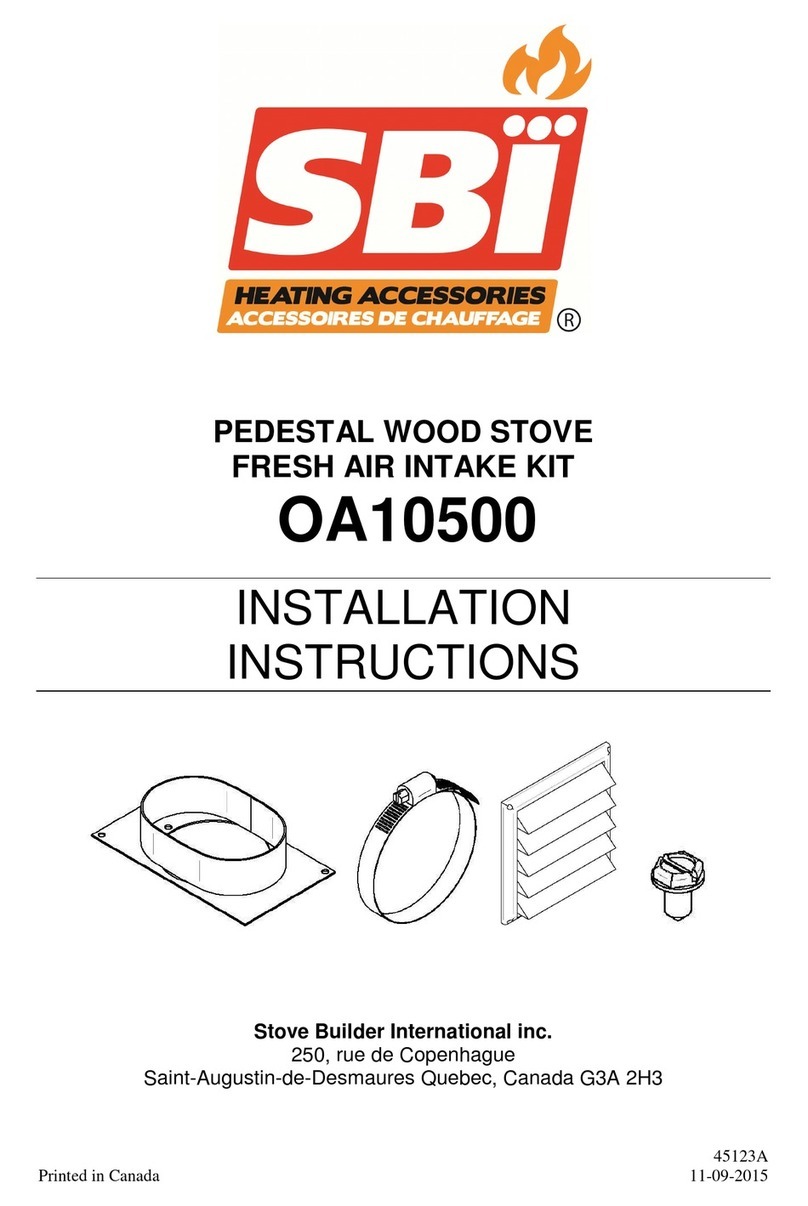
Stove Builder International
Stove Builder International OA10500 installation instructions

Haas+Sohn
Haas+Sohn Kuopio II 265.17-ST Assembly instructions

Austro Flamm
Austro Flamm G1 User instructions

diLUSSO
diLUSSO R5 Installation and operating instructions
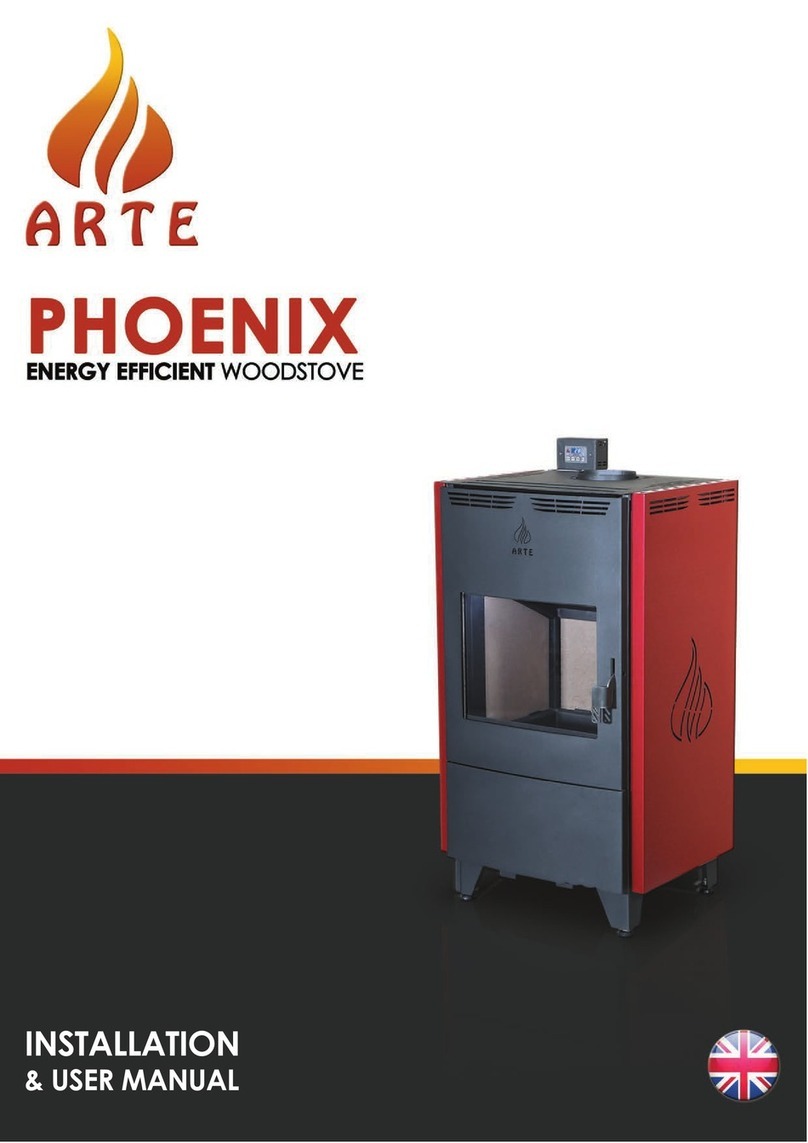
ARTE
ARTE PHOENIX Installation & user manual
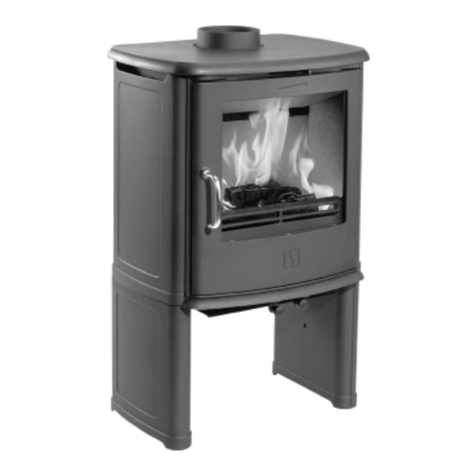
SCAN
SCAN Andersen 8-2 Instructions for installation and use
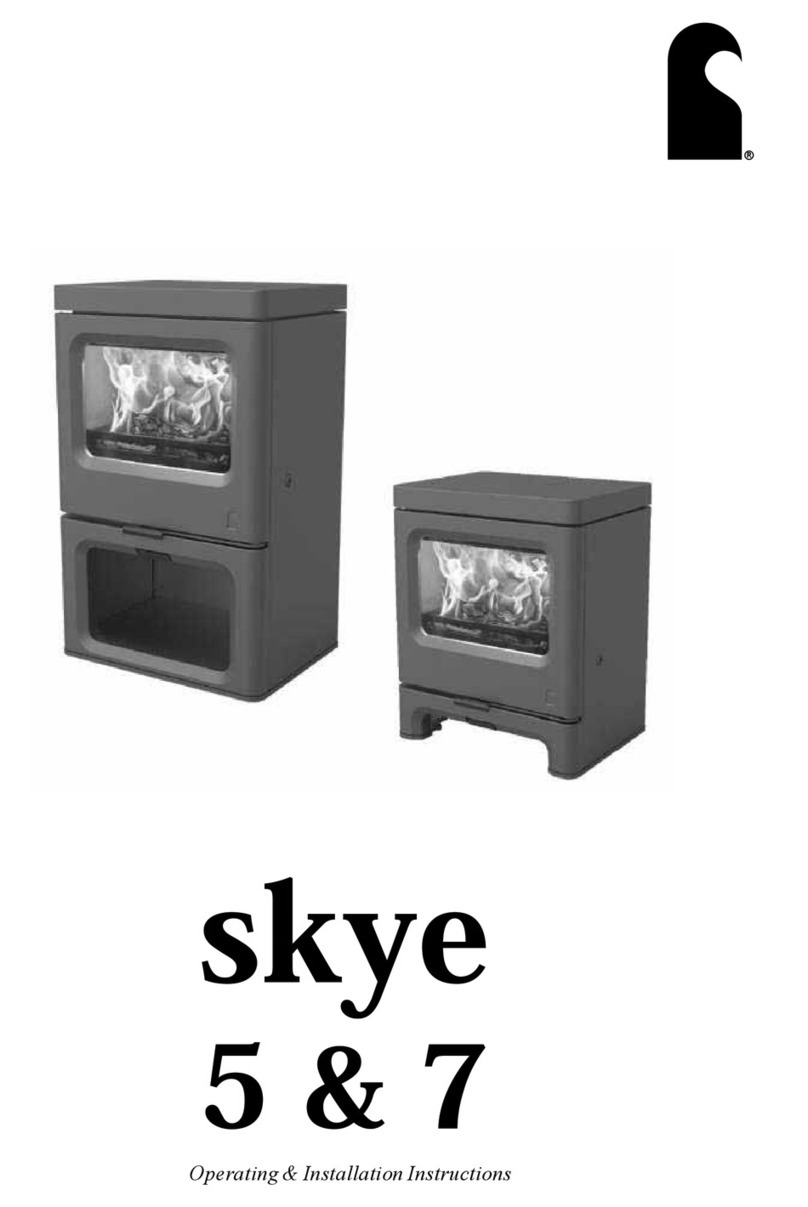
Charnwood
Charnwood Skye 7 Operating & installation instructions
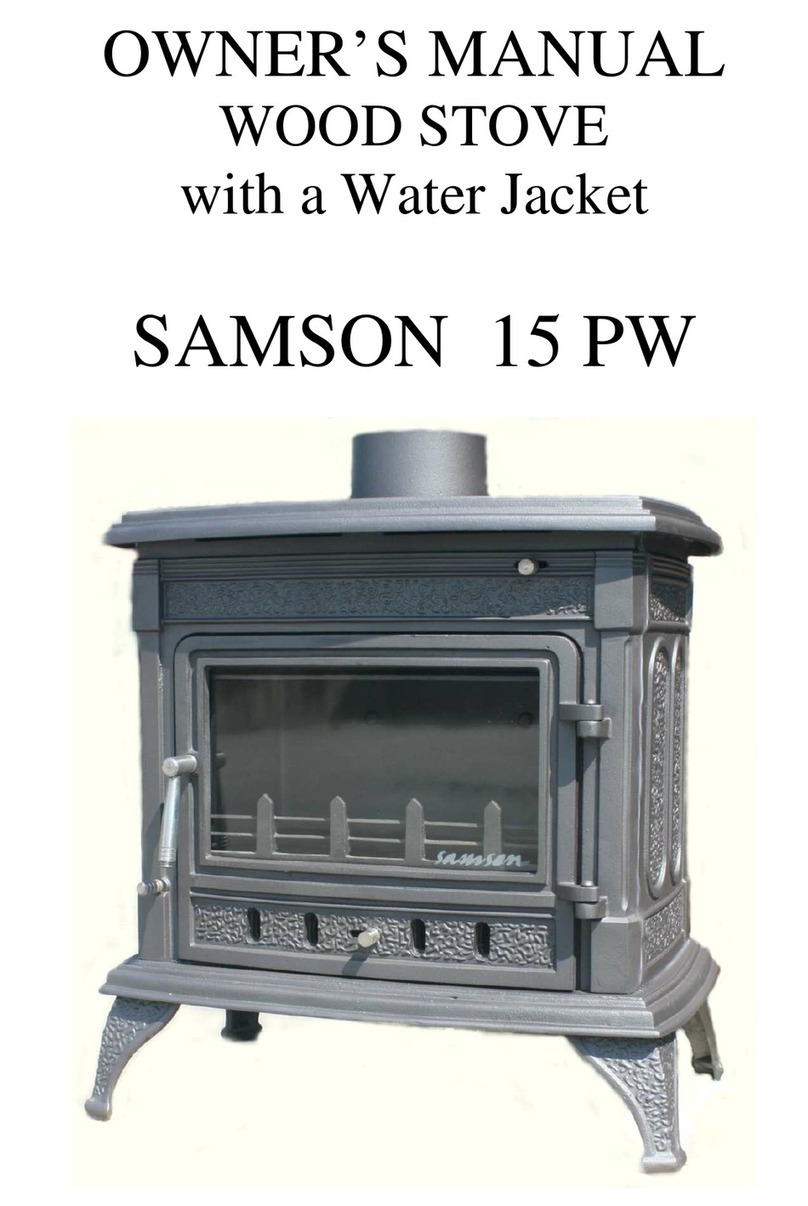
Samson
Samson 15 PW owner's manual

ECCO STOVE
ECCO STOVE E730 instruction manual
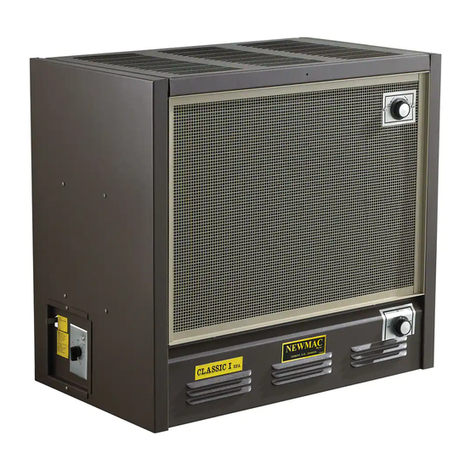
Newmac
Newmac NS220E Installation, operating and service manual

Dovre
Dovre 540W Installation instructions & operating manual

